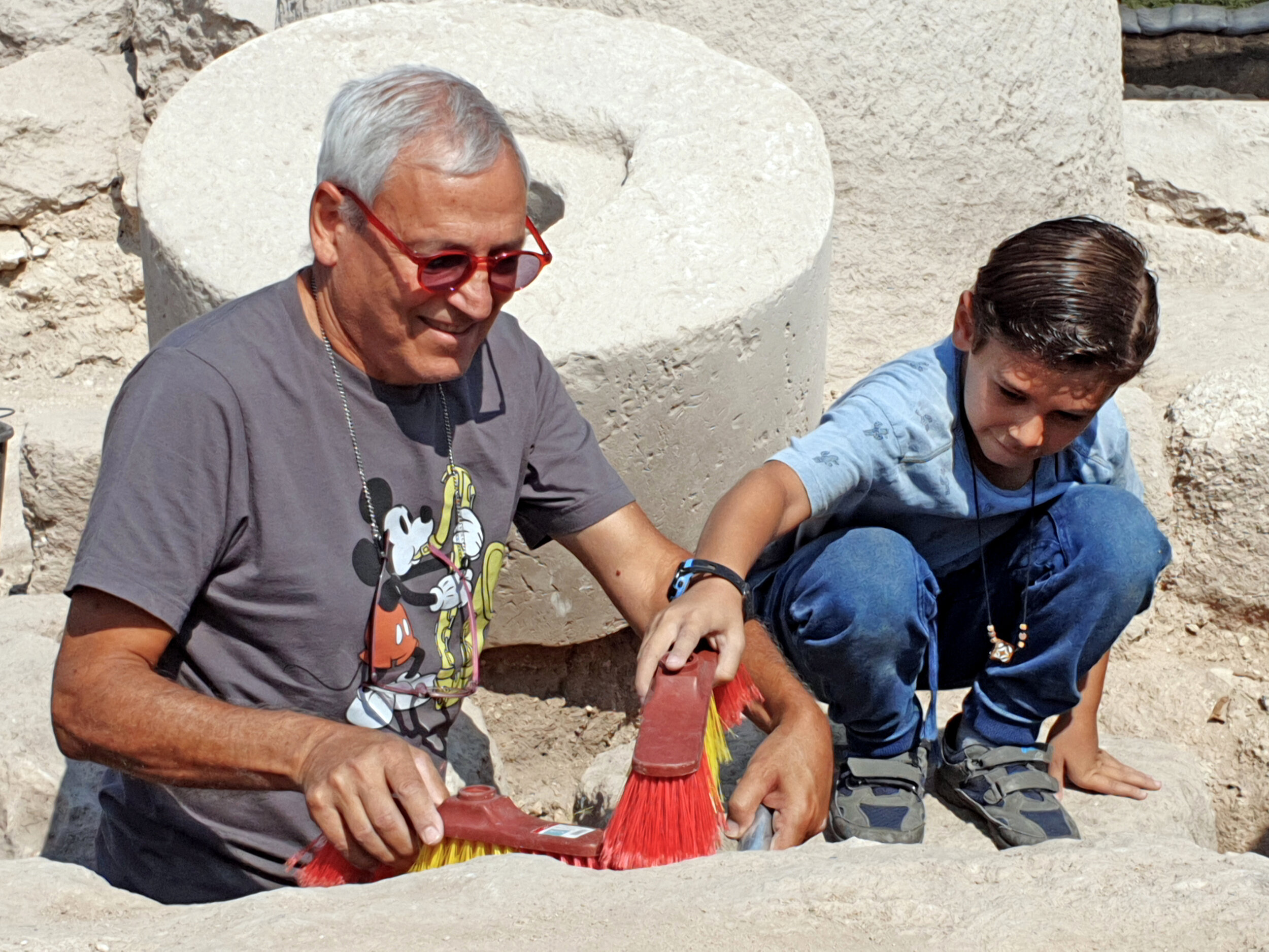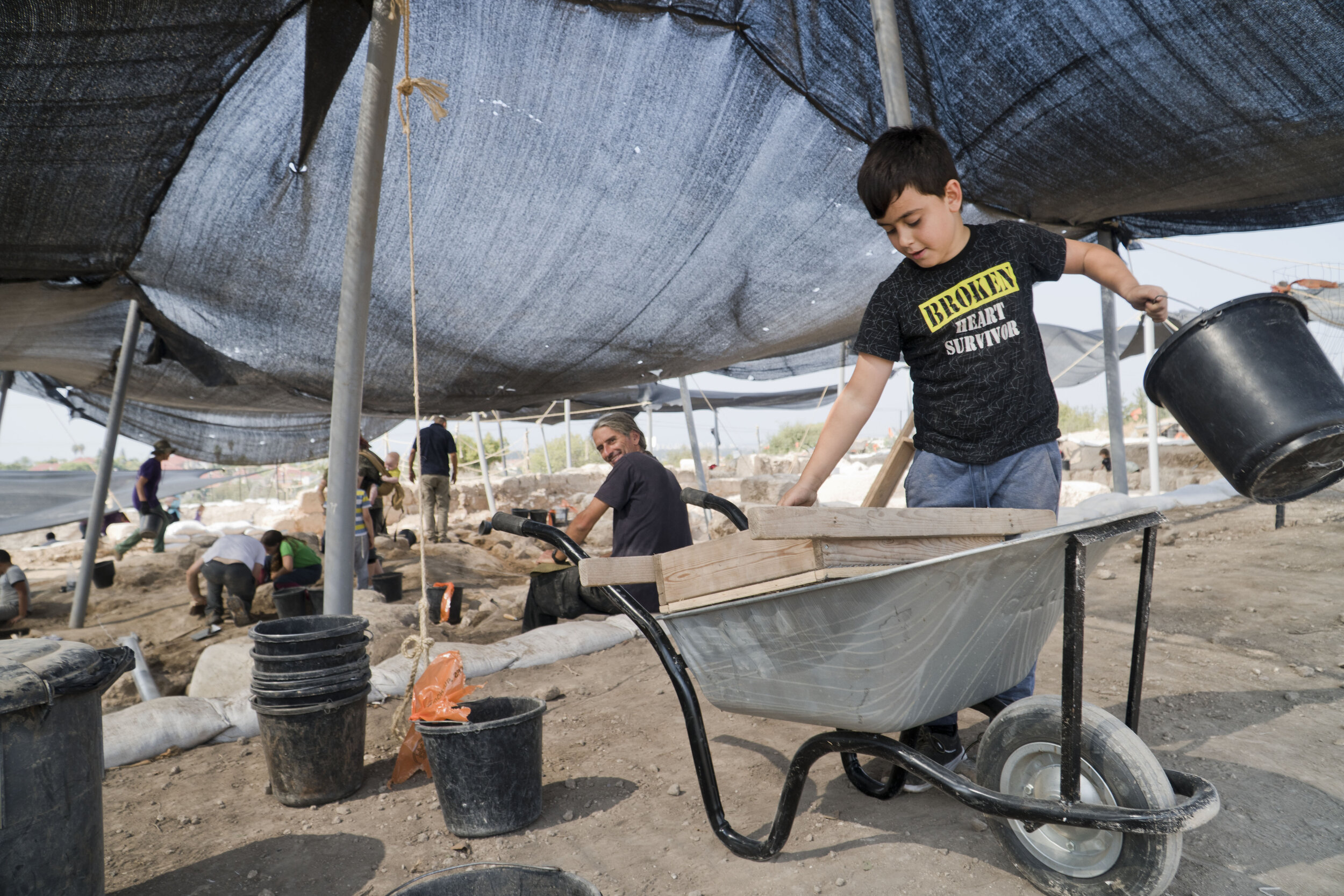1,400 year-old hammer and nails discovered at Usha show Byzantine inhabitants practiced metallurgy.
This past Sukkot, about 8,500 people participated in archaeological excavations and activities hosted by the Israel Antiquities Authority (IAA). One family, from Tur’an in the Lower Galilee, made a rare and informative discovery while volunteering at the IAA’s excavation of ancient Usha. The family discovered an iron hammer-head and nails dating to the Byzantine period, about 1,400 years ago.
Yair Amitzur with the 1,400 year-old iron hammer and nails. Photo: Yoli Schwartz, Courtesy of the Israel Antiquities Authority.
According to Yair Amitzur and Eyad Bisharat, directors of the excavation on behalf of the IAA, “About 20 iron hammers are registered in the Israel Antiquities Authority records, only six of them from the Byzantine period.” While the hammer’s discovery is rare and exciting, the unattractive lump of iron slag found nearby may be more exciting still. The slag indicates Usha’s Byzantine inhabitants were manufacturing iron tools themselves, rather than importing them.
“We already knew” says Amitzur, “that the Usha settlers extensively manufactured glass vessels, since we found many wine glasses and glass lamps together with glass lumps that were the raw material.” Amitzur also notes that ancient sources refer to a man who lived in Usha named Rabbi Yitzhak Nafha. The name ‘Nafha’ means ‘the blower,’ and suggests that the Rabbi probably worked as a glass manufacturer. While the glass industry at Usha has been known for some time, the discovery of the hammer, nails, and iron slag show that metallurgy was also practiced on site.
Ancient wine glasses evidence widespread glass manufacturing at Usha. Photo: Yoli Schwartz, Courtesy of the Israel Antiquities Authority.
In addition to these industries, archaeologists have discovered large winepresses and complex oil-pressing installations. Most likely, Usha’s primary source of income was the large-scale production of wine and olive oil from produce grown on the hills nearby. Adjacent to the oil and winepresses are two ritual baths with plastered walls and steps. The baths were hewn from bedrock about 1,800 years ago, during the Roman and Byzantine periods.
Aerial view of the winepresses and adjacent ritual bath at Ancient Usha. Photo: Assaf Peretz, Courtesy of the Israel Antiquities Authority.
You might suppose it’s natural to build baths near an industrial area. After all, who doesn’t like to hop in the shower after a long day’s work? These baths, however, were likely used before workers began their day’s labor. Ritual baths, or mikvaot, have been found throughout Israel and in Jewish communities worldwide. They were used for ritual purification. The proximity of these baths to the wine and olive presses indicate that the Jewish workers took care to purify themselves in order to manufacture ritually-pure oil and wine.
This heightened awareness of ritual purity is unsurprising, given that the Sanhedrin made its headquarters in Usha after Jerusalem’s temple was destroyed and the Bar Kochba revolt failed in 135 CE. According to Amitzur, “The ritual baths adjacent to the presses indicate that the Sanhedrin Sages paid particular attention to issues of ritual purity.”
Excavations at Usha are part of the Sanhedrin Trail Project initiated by the IAA. Over the past year, more than 15,000 youth and families have taken part in the educational venture at Usha. Inviting youth and volunteers to assist in excavations is part of the IAA's goal to bring the community closer to its own cultural heritage.
Short film on the Usha excavation (Hebrew). Video: Yaniv Berman, Courtesy of the Israel Antiquities Authority.
Abby VanderHart
FIAA Contributor







